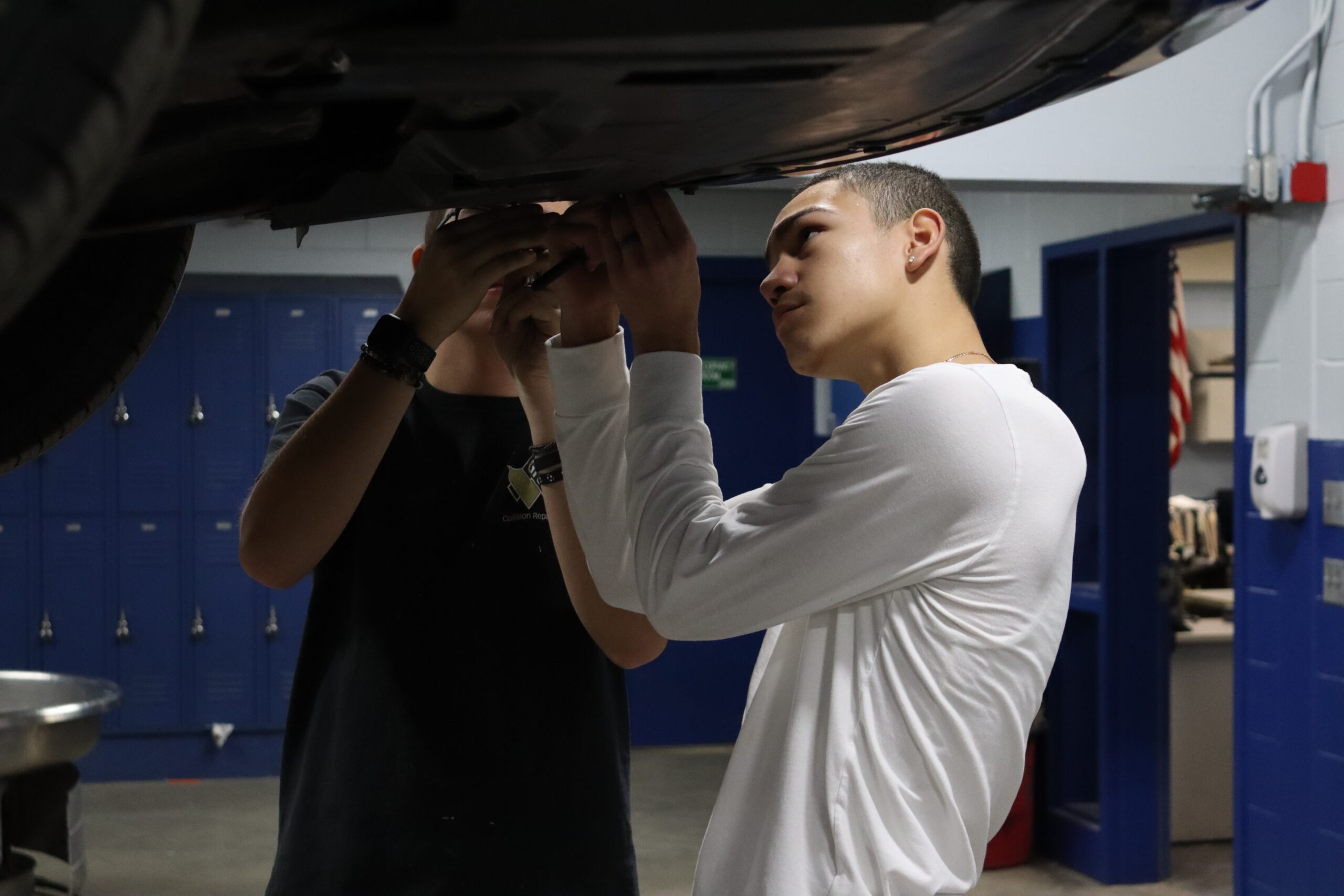CVTE
Collision Repair Technology
Guy Shepherd, Academy C Administrator – Ext. 113
Course & Program of Studies
Statement of Purpose
The Auto Body Repair program at GNBRVTHS is dedicated to providing students with the skills and knowledge necessary to succeed in the automotive collision repair industry. Through a combination of classroom instruction and hands-on training, students will develop expertise in:
- Vehicle Damage Assessment: Evaluating vehicle damage and determining the extent of repairs needed.
- Metalworking: Using various metalworking techniques, such as cutting, bending, and welding, to repair damaged body panels.
- Paint and ReFinishing: Applying paint and other finishes to vehicles, ensuring a high-quality, durable finish.Application of PPG Enviro-Base and Solvent Paints and primers.
- Frame and Structural Repair: Repairing structural damage to vehicle frames and unibody structures.
- Electrical Systems: Diagnosing and repairing electrical systems, including wiring harnesses and electronic components.
- Estimating and Insurance: Preparing accurate repair estimates and dealing with insurance claims. Using the Mitchells Estimating Software System
By the end of the program, students will be well-prepared to enter the workforce as skilled auto body technicians. They will have the knowledge and skills to work in a variety of automotive repair settings, including collision repair shops, dealerships, and independent repair facilities.
Exploratory Program
The Freshman Auto Body Repair Exploratory program provides an introduction to the exciting world of automotive collision repair. Students will gain hands-on experience with basic collision repair techniques, including:
- Safety: Understanding and practicing safety procedures in the auto body shop.
- Tool Usage: Learning to use hand tools and power tools safely and effectively including stencil work to complete custom designs and refinishing
- Painting and Finishing: Learning about painting techniques, including masking, priming, and applying paint using the SIM Virtual Spray System and a Mini Spray gun to produce a customized painted project to take home.
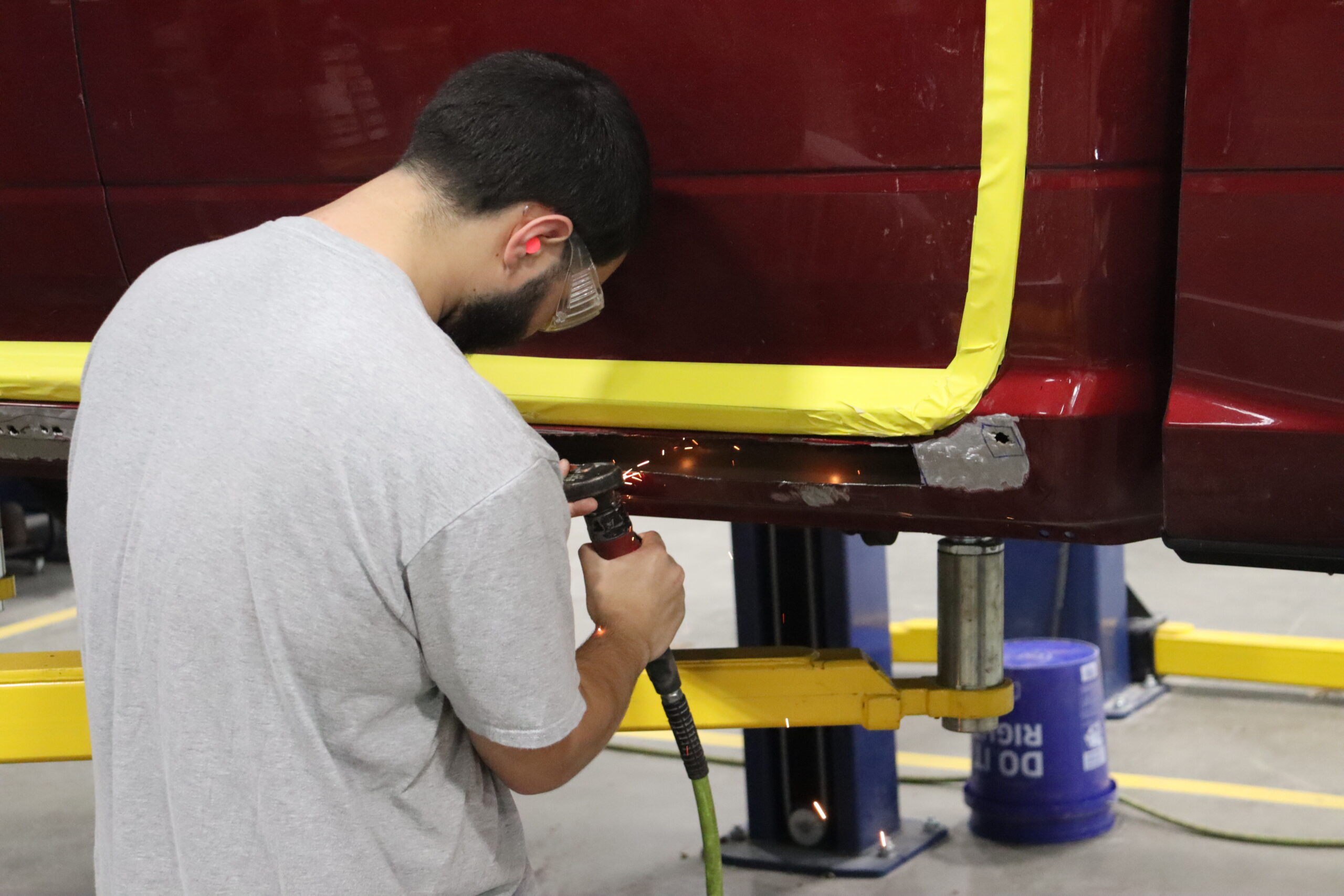
Freshman Program
The Freshman Auto Body Repair program provides a solid foundation in the fundamentals of automotive collision repair. Key areas of focus include:
- Safety: Prioritizing safety in the shop environment, including the proper use of personal protective equipment (PPE) and understanding safety regulations.
- Tool Usage: Learning to use hand tools and power tools safely and effectively.
- Paint and Finishing: Understanding the basics of painting and finishing techniques, including masking, priming, and applying paint.
- Minor Dent Repair: Using techniques to repair minor dents and dings.
- Vehicle Damage Assessment: Evaluating vehicle damage and determining the extent of repairs needed.
By the end of the freshman year, students will have a solid understanding of the automotive collision repair process and be prepared to advance to more complex tasks in their sophomore year.
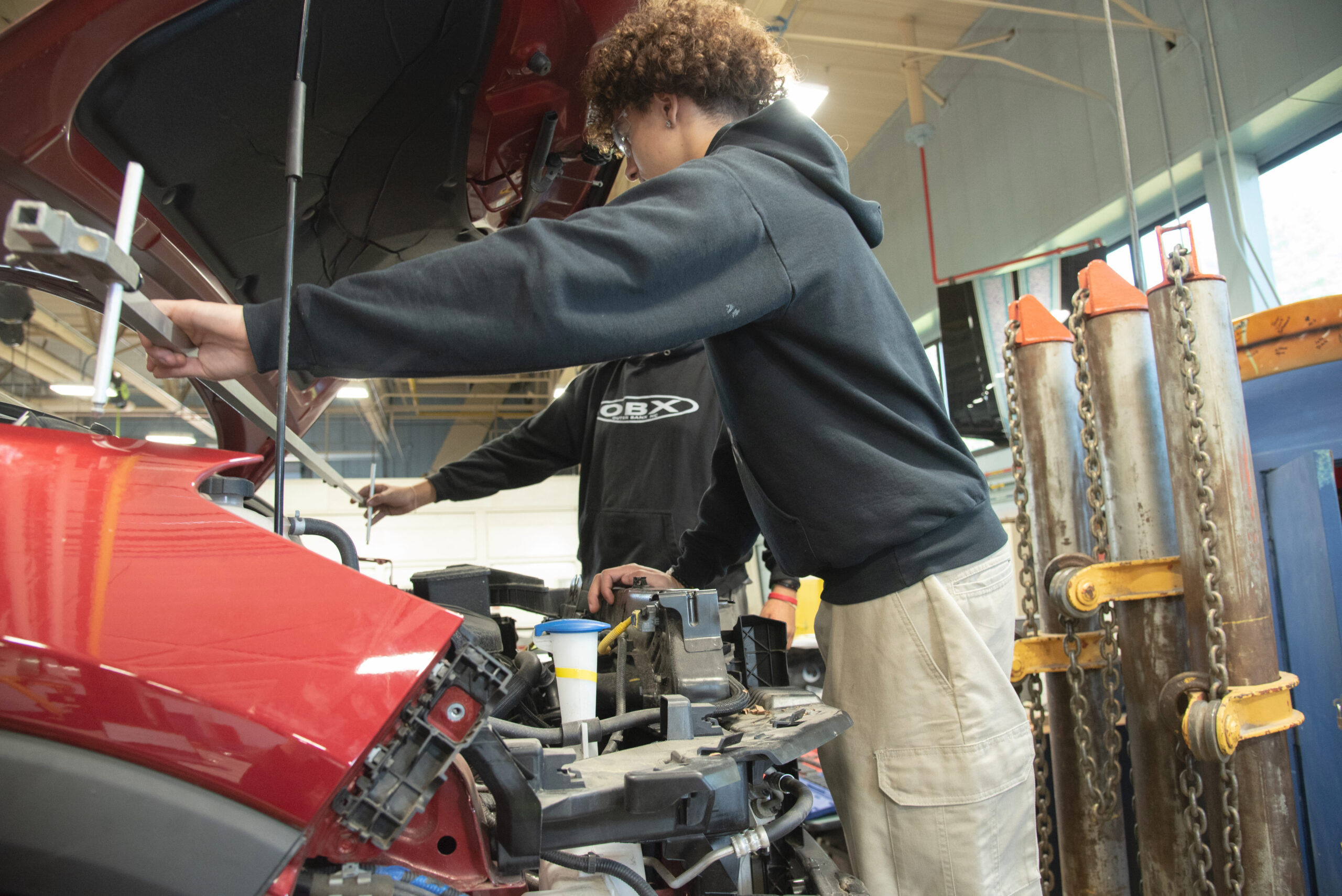
Sophomore Program
The Sophomore Auto Body Repair program builds upon the foundational skills acquired in the freshman year. Key areas of focus include:
- Metalworking: Using various metalworking techniques to repair damaged body panels, including cutting, bending, and welding.
- Body Filler Application: Applying body filler to repair dents and imperfections in body panels.
- Painting and Refinishing: Preparing surfaces for painting, mixing paint, and applying paint and clear coat finishes.
- Small Dent Repair: Learning techniques to repair minor dents without the need for body filler and paint.
Through hands-on training and real-world projects, students will gain valuable experience in the collision repair process and be prepared for advanced training in their junior and senior years.
Sophomore Related Class 1
Collision Repair Related Theory
The Sophomore Auto Body Repair program builds upon the foundational skills acquired in the previous years, focusing on advanced techniques and technologies in collision repair. Key areas of focus include:
- Advanced Refinishing Techniques: Mastering advanced painting and refinishing techniques, including blending, color matching, and clear coat application.
- Advanced Welding: Gaining proficiency in advanced welding techniques, such as MIG welding aluminum.
- Frame and Structural Repair: Understanding complex frame and structural repairs, including straightening frames and replacing damaged components.
- Electrical Systems: Diagnosing and repairing electrical systems in vehicles, including wiring harnesses and electronic components.
Through hands-on training and real-world projects, students will develop the skills and knowledge needed to become skilled auto body technicians.
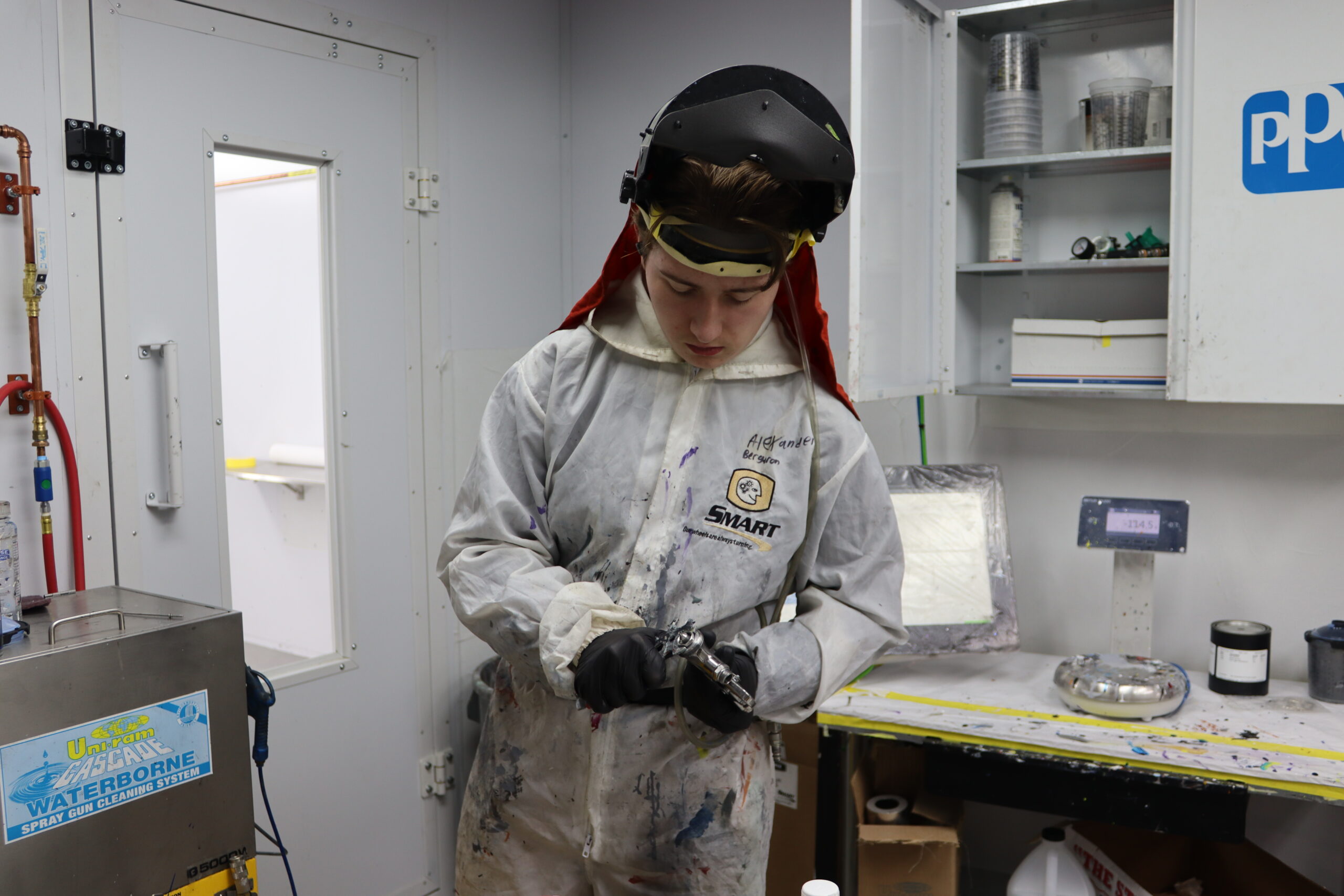
Sophomore Related Class 2
Mathematical Theory
The Sophomore Auto Body Repair Related Math course provides students with essential mathematical skills for success in the automotive industry. Key topics include:
- Basic Arithmetic: Mastering fundamental operations, including addition, subtraction, multiplication, and division.
- Fractions, Decimals, and Percentages: Understanding the relationships between fractions, decimals, and percentages, and performing calculations involving these concepts.
- Measurement: Using various measuring tools, such as rulers, tape measures, and tram gauges , to accurately measure dimensions.
- Financial Mathematics: Understanding financial concepts, including budgeting, cost estimation, and profit and loss calculations.
- Students will begin to learn personal finance given to the Collision program from a banking program such as writing checks, keeping track of the banking register, paying utilities bills and keeping track of percentages from part ordering, etc.
By the end of the course, students will be able to:
- Apply mathematical skills to real-world automotive repair problems.
- Use measuring tools accurately.
- Calculate materials and labor costs.
- Understand and interpret technical drawings and specifications.
- Make informed decisions based on mathematical calculations.
Through a combination of classroom instruction and hands-on application, students will develop the mathematical skills necessary to excel in the automotive industry.
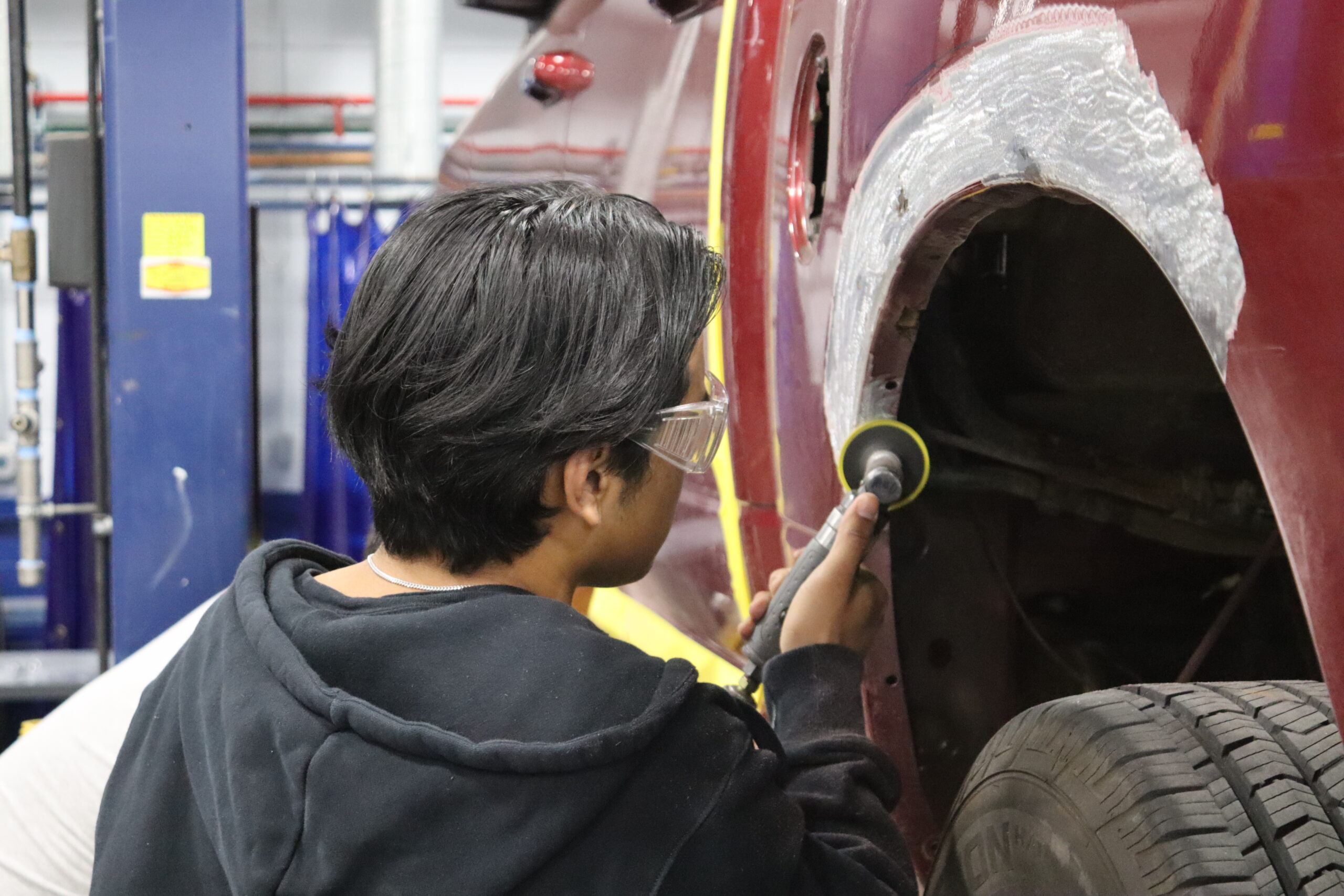
Junior Program
The Junior Auto Body Repair program builds upon the foundational skills acquired in the previous years, focusing on advanced techniques and technologies in collision repair. Key areas of focus include:
- Advanced Refinishing Techniques: Mastering advanced painting and refinishing techniques, including blending, color matching, and clear coat application.
- Advanced Welding: Gaining proficiency in advanced welding techniques, such as MIG welding aluminum and factory spot welding.
- Frame and Structural Repair: Understanding complex frame and structural repairs, including straightening frames and replacing damaged components.
- Electrical Systems: Diagnosing and repairing electrical systems in vehicles, including wiring harnesses and electronic components.
- Estimating and Insurance: Preparing accurate repair estimates and dealing with insurance claims.
- Cabinet sandblasting and Field sandblasting using a DB500 Mobile sand Blasting machine. Something that is also in the field as a business of its own.
- Students will be able to identify the parts of the steering and suspension systems, list the function of the parts of the steering and suspension system parts by inspection or measurement, detect damaged steering and suspension system parts by inspection or measurement, explain how to remove and install various steering and suspension parts, and define wheel alignment terms.
- Students will be able to understand the function of the brake system and its component parts, identify brake system wear and damage, remove and replace damaged or worn parts.
- Business Management: Understanding the business aspects of running an auto body shop, including financial management, marketing, and customer service.
Through hands-on training and real-world projects, students will develop the skills and knowledge needed to become skilled auto body technicians. By the end of the junior year, students will be well-prepared for advanced training and real-world applications in their senior year.
Junior Related 1
Collision Repair & Estimating Lab
The Junior Auto Body Repair course provides students with a comprehensive understanding of the business and professional aspects of the automotive collision repair industry. Key topics include:
- Estimating and Insurance: Mastering the art of writing accurate and detailed repair estimates, including labor, parts, and materials.
- Business Management: Understanding the financial aspects of running an auto body shop, including budgeting, cost control, and profit and loss statements.
- Customer Service: Developing strong customer service skills, including effective communication, problem-solving, and conflict resolution.
- Professional Development: Exploring career advancement opportunities and continuing education options, such as ASE certifications.
Industry Standards and Regulations: Adhering to industry standards and regulations, including safety protocols and environmental compliance.

Junior Related 2
Structural & Non-Structural Theory
This comprehensive curriculum provides a strong foundation in automotive technology. It covers a wide range of topics, from basic vehicle systems to advanced safety features.
Here’s a breakdown of the key areas of study:
Vehicle Systems:
- Vehicle Structure and Components: Understanding the different types of vehicle construction, materials used, and major assemblies.
- Steering and Suspension Systems: Identifying and diagnosing issues with steering and suspension components, such as tie rods, ball joints, and shock absorbers.
- Electrical Systems: Troubleshooting electrical problems, including issues with batteries, alternators, starters, and wiring harnesses.
- Brake Systems: Diagnosing and repairing brake system components, such as brake pads, rotors, and calipers.
- Cooling, Heating, and Air Conditioning Systems: Understanding the principles of HVAC systems and performing maintenance and repairs.
- Powertrain Systems: Diagnosing and repairing engine and transmission components.
- Restraint Systems: Understanding the function of airbags, seatbelts, and other safety systems.
By covering these essential topics, this curriculum prepares students for a variety of careers in the automotive industry, including automotive technician, service advisor, and parts specialist.
Senior Program
The Senior Auto Body Repair program provides advanced training in automotive collision repair, preparing students for careers in the industry. Key areas of focus include:
- Advanced Refinishing Techniques: Mastering advanced painting and refinishing techniques, including blending, color matching, and clear coat application.
- Advanced Welding: Gaining proficiency in advanced welding techniques, such as MIG welding aluminum and factory spot welding.
- Frame and Structural Repair: Understanding complex frame and structural repairs, including straightening frames and replacing damaged components.
- Electrical Systems: Diagnosing and repairing electrical systems in vehicles, including wiring harnesses and electronic components.
- Estimating and Insurance: Preparing accurate repair estimates and dealing with insurance claims.
- Business Management: Understanding the business aspects of running an auto body shop, including financial management, marketing, and customer service.
Through a combination of classroom instruction, hands-on training, and real-world experience, students will develop the skills and knowledge needed to succeed in the automotive collision repair industry. By the end of the senior year, students will be well-prepared to enter the workforce as skilled auto body technicians. They will have the confidence and competence to tackle complex repair challenges and provide high-quality services to customers.
Senior Related 1
Collision Uni-Body & Frame Theory
The Senior Auto Body Repair program provides students with advanced training in complex collision repair techniques. Key areas of focus include:
- Advanced Refinishing: Mastering advanced painting and refinishing techniques, including waterborne paint systems, blending, color matching, and clear coat application.
- Structural Repair: Analyzing and repairing complex structural damage, including frame straightening and unibody repairs.
- Advanced Welding Techniques: Gaining proficiency in advanced welding techniques, such as MIG welding aluminum and steel.
- Electrical System Diagnosis and Repair: Understanding and repairing complex electrical systems, including wiring harnesses and electronic control modules.
- Estimating and Insurance: Developing expertise in estimating repair costs and dealing with insurance claims.
- Industry Standards and Regulations: Adhering to industry standards and regulations, including safety protocols and environmental compliance.
By the end of the senior year, students will be well-prepared to enter the workforce as skilled auto body technicians. They will have the knowledge and skills to work on a variety of vehicles, from luxury cars to heavy-duty trucks. They will also be able to diagnose and repair complex damage, ensuring that vehicles are restored to pre-accident condition.
Senior Related 2
Collision Repair Tech Lab – Elective
Utilizing the Next Gen Personal Finance Curriculum, students gain skills in everyday life such as Taxes, Paystubs, Checking and Savings accounts, and much more. Students learn all phases of personal finance in the modern era. The Personal Finance course provides students with a solid foundation in financial literacy. Key topics include:
- Money Management: Budgeting, saving, and spending wisely.
- Banking: Understanding checking and savings accounts, online banking, and mobile banking.
- Credit and Debt: Building good credit, avoiding debt, and understanding credit card interest.
- Taxes: Filing taxes, understanding tax forms, and paying taxes on time.
- Insurance: Exploring different types of insurance, including health, auto, homeowners, and renters insurance.
- Homeownership: Learning about the process of buying a home, including mortgages, property taxes, and home maintenance.
- Investing: Understanding the basics of investing, including stocks, bonds, and mutual funds.
- Career Planning: Exploring career options and developing a financial plan for the future.
By the end of the course, students will be equipped with the knowledge and skills to make informed financial decisions throughout their lives.
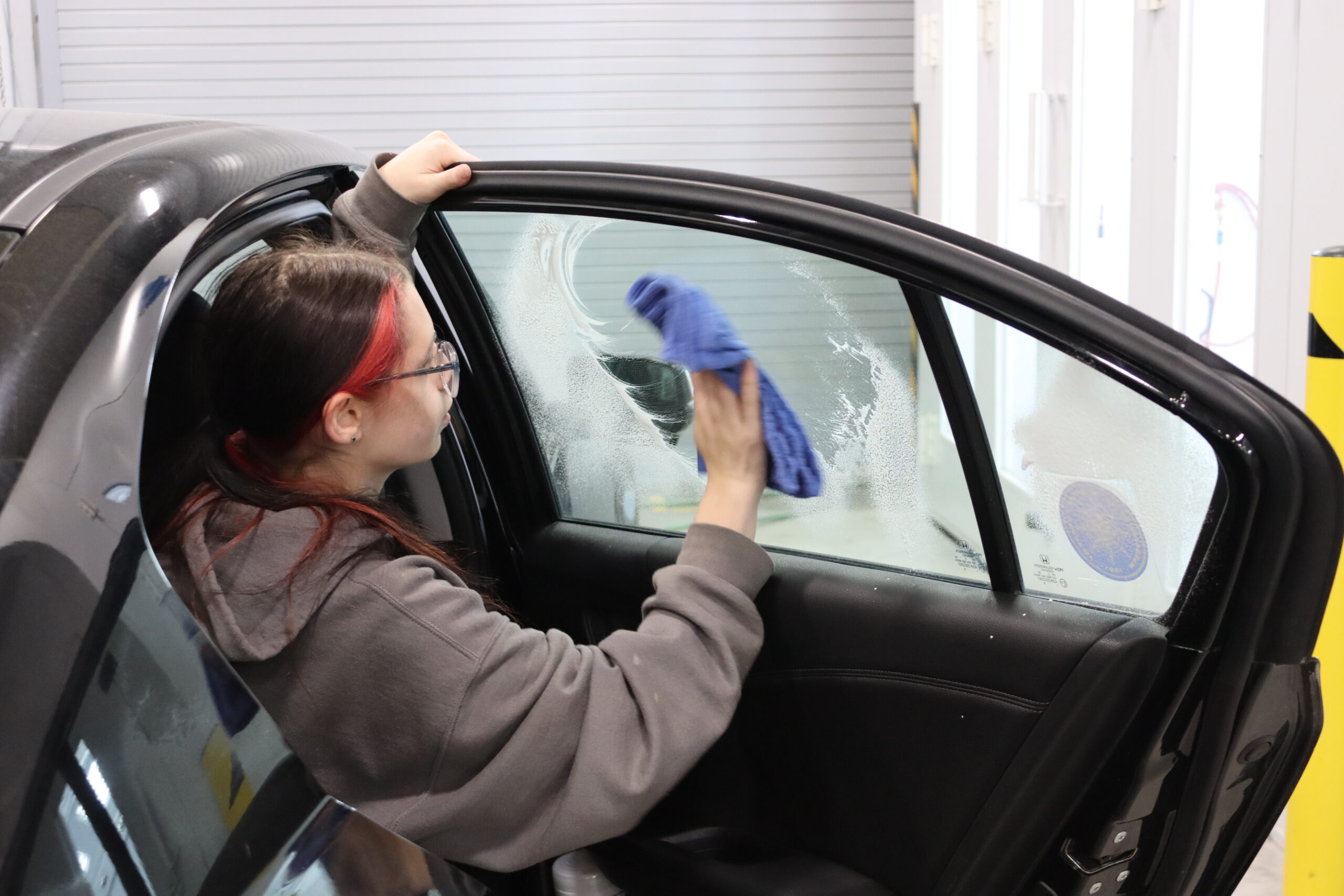
Certifications
The GNBVT program is NATEF (National Automotive Technicians Education Foundation) Certified
- Painting and Refinishing
- Non–Structural Analysis and Damage Repair
- Structural Analysis and Repair
- EPA 6H Rule
- Mechanical and Electrical Components
- ASE (Automotive Service Excellence) Junior Certification – One year trade credit towards two year requirement.
- OSHA 10 Certification
Career Opportunities
- Paint Technician
- Auto Body Repair Technician
- Frame Repair Technician
- Parts Person
- Insurance Estimating
- Automotive Detailing
- Dealer Prep Person
- Commercial Coating Painter
Post-Secondary Education
- New England Institute of Technology
- Universal Technical Institute
- Lincoln Tech
